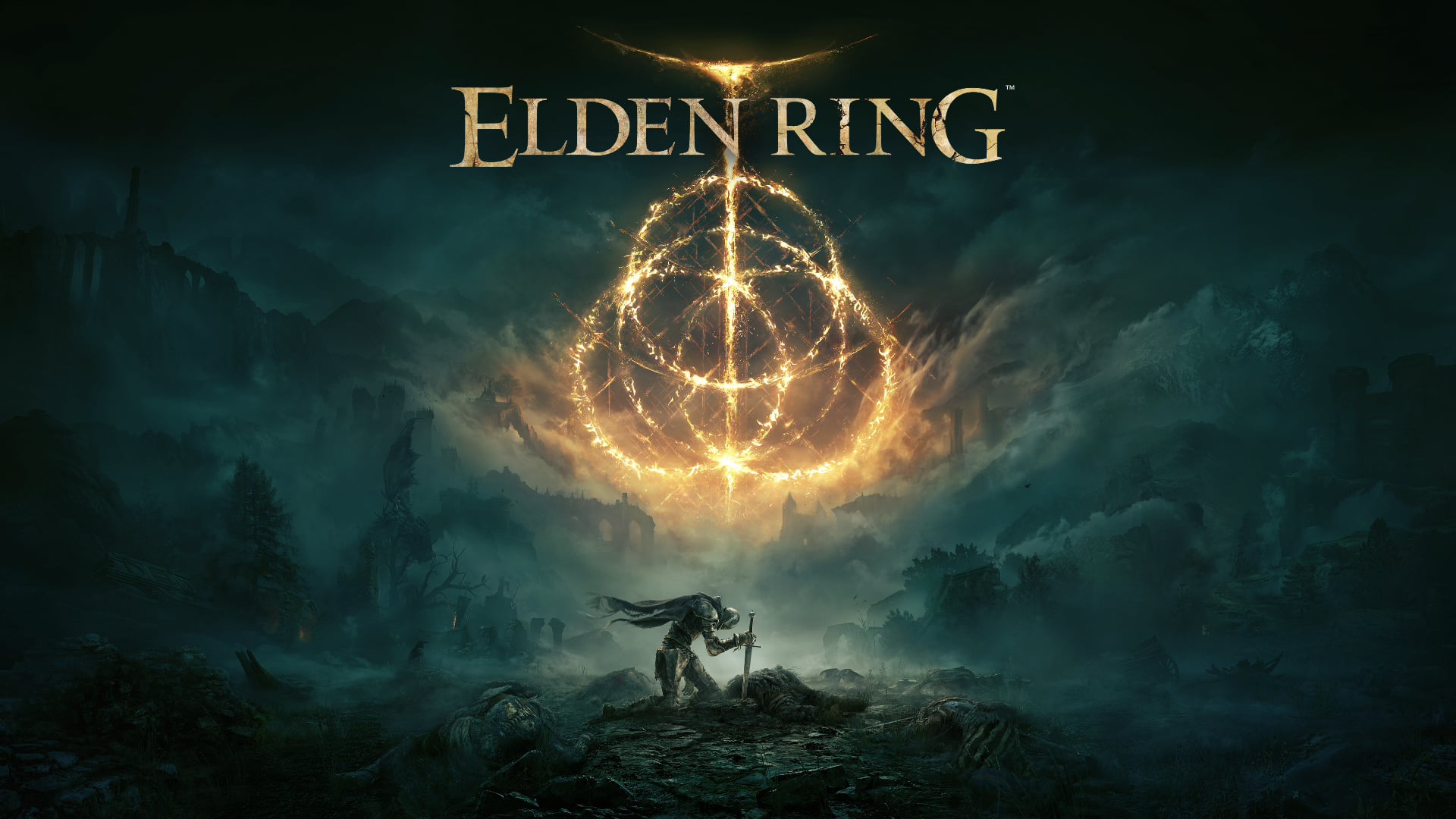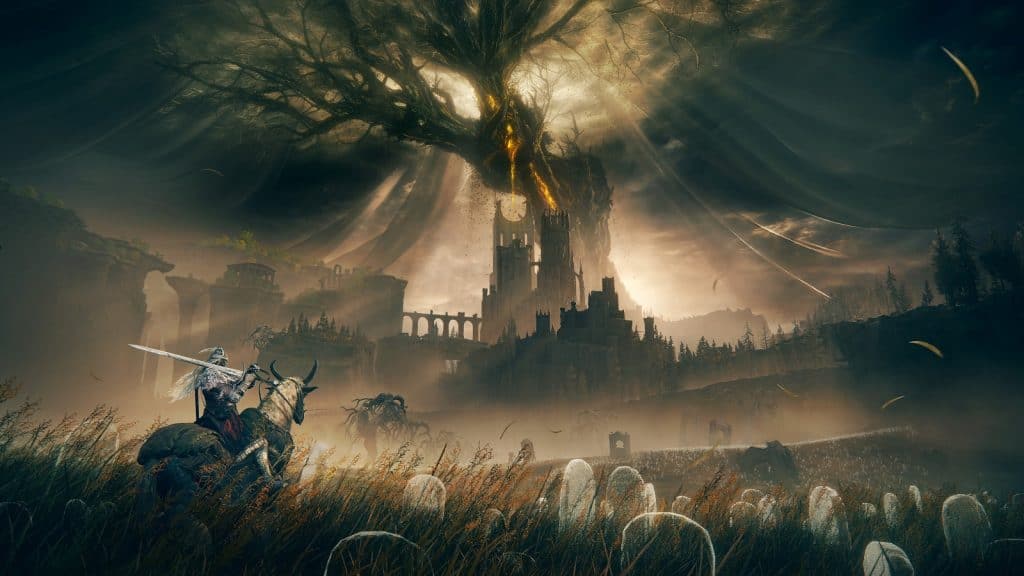Game developer FromSoftware has always struck me as a perpetual student of the video game medium. Starting with Demon’s Souls, which modernized classic RPGs like King’s Field with a challenging twist, later tossing in old-school platforming, and Metroidvania-style levels with Dark Souls—eventually refining their new genre with sequels and spin-offs before trying something new with Sekiro: Shadows Die Twice. A game that sometimes feels more like a rhythm game than an action game. With Elden Ring, From Software treads new ground, breaking into open-world games, and on their first attempt, they have already figured out how to make an open-world game that is meaningful and, most importantly, fun.
Going into Elden Ring, I was pretty hesitant about the decision to take this longstanding genre and place it into an open world. Far too often, we find games that cannot translate their gameplay well into the open-world framework. How would an open world even benefit a game like this? Well, it didn’t take too long as I inhabited The Lands Between to make me realize that From’s take on an open world was precisely what the Soulslike genre needed to keep things fresh. To accomplish this feat, FromSoftware appears to have looked to the past for inspiration once again.
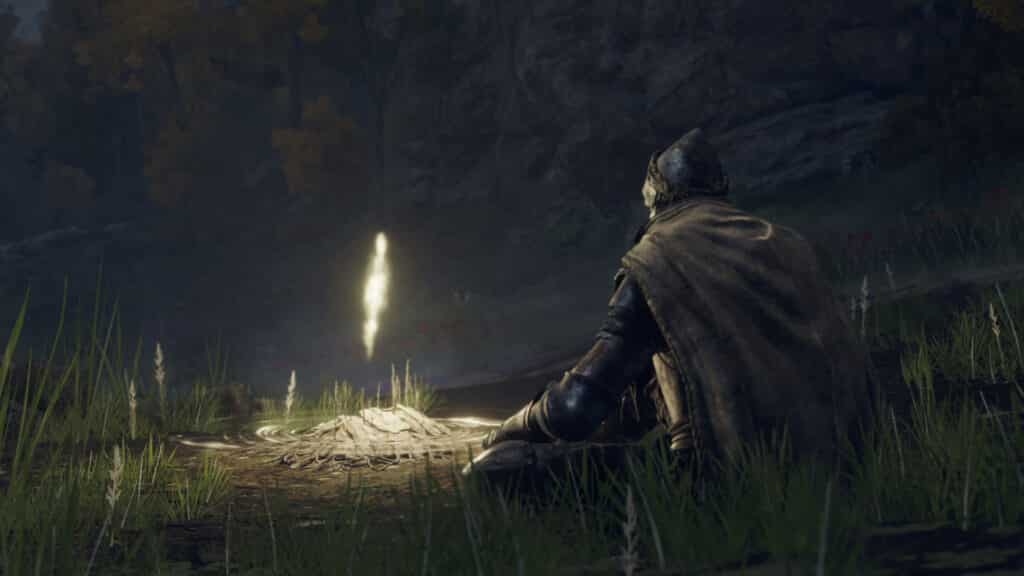
Before the omnipresent waypoint marker found itself streamlining how we play open-world games, progress in classic open-world RPGs was predicated on the simple desire to explore the world. Take, for example, Final Fantasy, where you would more or less find Garland on accident, only finding the Chaos Shrine because there was a cave on the overworld map, and you wanted to go see what was inside. This spirit of curiosity and exploration is written all over Elden Ring. This is a game where you will always be asking yourself, “What’s over there?”
In Elden Ring, the only things that hint you towards what to do next are the Sites of Grace (our new bonfires), wisping light in the general direction of your next objective, or NPCs that only nudge you in the right direction. Nothing is ever explicitly stated. The only way to progress is to look in every nook and cranny that The Lands Between offers, à la classic RPG. Everything you see in this world is somewhere you can reach. That daunting castle in the distance, so far and so high up that it is only a fog-shrouded silhouette on a cliff, you can go there. And you can bet that there will be some sort of titanous foe ready to meet you at the end of it.
The Lands Between is an open world that has been crafted very carefully and meticulously. Nothing was placed just because From needed something to fill out the world. The Lands Between feels alive, or at least as alive as the melancholic fever-dream worlds that FromSoftware crafts can be. The local fauna prance around the landscape as enemies go about their routes and even fight each other at random. You are transported to a world that feels so mysterious yet so familiar to everyone that adores these games. The world tells its own story of rot and ruin as you ride through its varied and colorful landscapes. While on the surface, the prospect of leaving no stone unturned in an open-world game seems daunting, it is a delightful experience in Elden RIng.
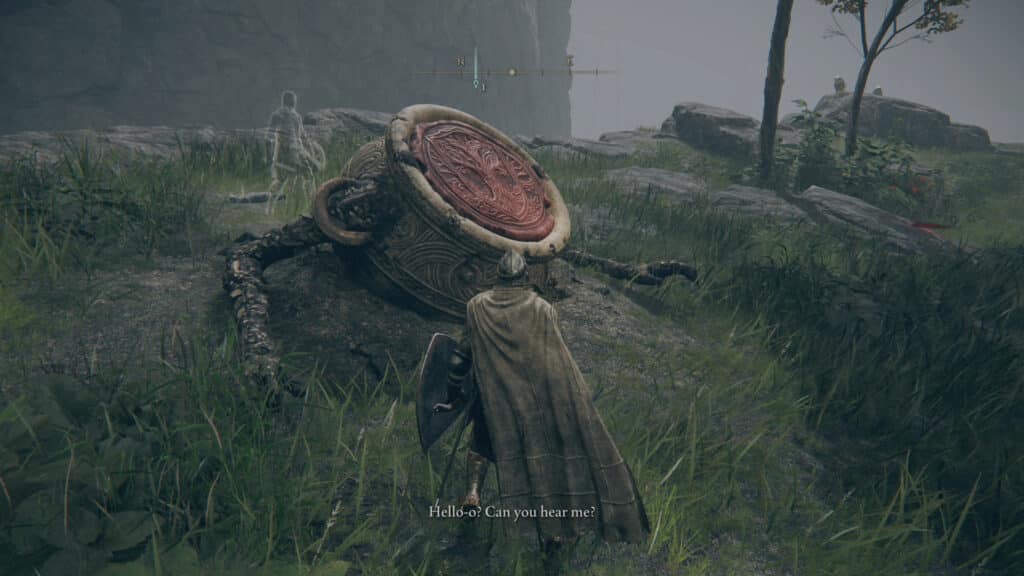
The Lands Between is filled with dungeons, some crypt-like, others cave-like, all ready to reward you for taking on their challenge. FromSoftware has doubled down on one of the most significant selling points of their games, the bosses. There are a lot of dungeons and a lot of bosses to fight. Granted, there are some limitations with such a boss-heavy game, which is the occasionally repeated dungeon boss, but they are far and few between.
The question isn’t if at the end of this dungeon there will be a boss prepared to whack you from wall to wall like you’re the ball in an eldritch monstrosity’s solo game of ping pong—there always will be. The question is, what will From reward me with for heading into a dungeon and facing another boss when I’m already battle-torn? And the answer is that you are rewarded with something worth the time and effort.
Have it be a new weapon, talisman, or even just more runes to help you level up, there is always a good reason to see what is in that next nook or cranny. Everything feels incredibly worthwhile in The Lands Between, and at no point did I ever feel like my time was being wasted with open-world filler or redundancy. It is merely an excellently designed open world.
However, a vast open world to explore isn’t the only thing that Elden Ring has to offer. In its overworld/dungeon structure, there are also massive castles and larger legacy dungeons which revert back to the classic, tightly-knit, linearly designed levels that Souls games are known for. These dungeons retain the classic FromSoftware level structure, complete with shortcuts, bonfires, verticality, and swarms of enemies ready to gank you in narrow hallways. They are traditional levels built into the open world and serve as a nice change of pace from open-world exploration.
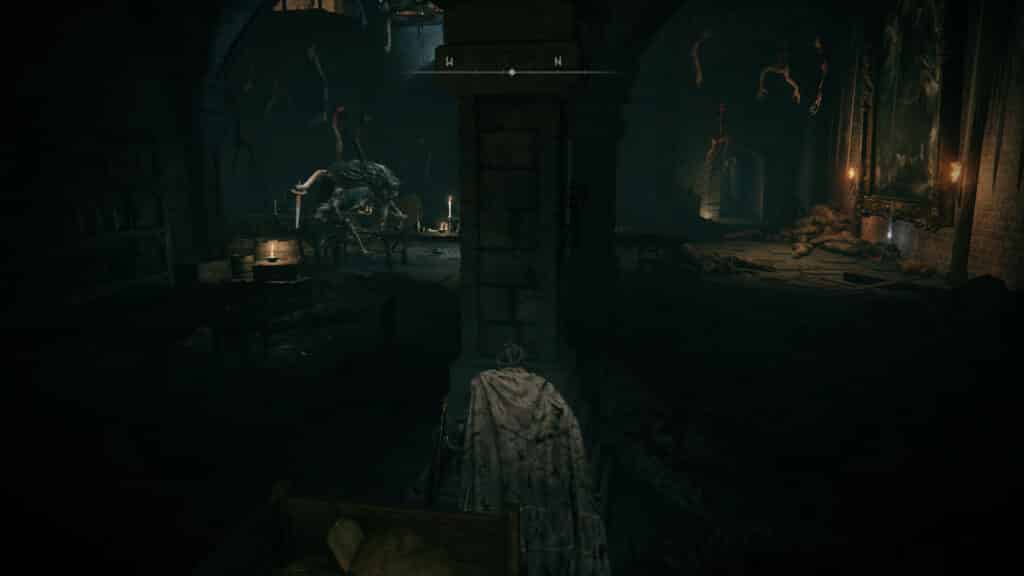
In many instances, Elden Ring feels more like one big package that puts together the best parts of every game From has created since Demon’s Souls. Returning players will be all too familiar with the classic Soulslike bonfire mechanics and the bonfire maiden, which acts as a vessel to level up and spend your souls, is now called runes. Of course, these are staples of the genre and should be expected in a Soulslike title of this caliber. However, stealth elements from Sekiro and battle arts from Dark Souls 3 make a comeback and help round out the existing Souls combat formula.
Elden Ring skews itself closer to the Dark Souls side of From’s catalog yet masterfully weaves the DNA of all of FromSoftware’s games into its own identity.
This is a far more aggressive game than its Soulsborne siblings were, clearly inspired by Sekiro’s breakneck combat speed. This is still the same game of dodging and boss butt poking that we have come to love; however, I did find myself dying more while on the defensive than on the offensive. Bosses are fast, with combos featuring multiple, rapid attacks and many gap-closing moves. Meaning that turtling behind your shield and waiting for a break in the onslaught is a rapid-fire way to have your poise broken and subsequently beat into the ground.
These new harder, better, faster bosses are incredible to fight and level out what I consider an easier and more accessible Souls game experience.
New features like the Ashes of War are your aid in the swarms of bosses that lie in The Lands Between. Ashes of War are a means to upgrade your weapon, speccing it into dex, strength, or faith-based attacks, while embedding special skills similar to the Ashina Sword Style skills in Sekiro or battle arts in Dark Souls 3. The Ashes of War mechanic creates a new layer of flexibility within builds, making hybrid builds like clerics much more enticing. Gone are the days of having to strictly plan out a weapon’s upgrade path as Ashes of War can be switched out on a whim, completely altering the trajectory of your build whenever you want.

Magic, in particular, has been reworked and feels remarkably powerful. In previous games, magic seemed to take a backseat to swordplay, but it appears that now From has decided to bring it back to the forefront, in a similar way that it was in Demon’s Souls. There are a bevy of scrolls to unlock and entire areas of the game dedicated to fleshing out sorcerer builds; it is a mechanic that is as viable as ever.
As you kill bosses and progress throughout Elden Ring, you will receive magic Spirit Ash scrolls that grant you the power to summon anything from spirit wolves to skeleton armies that will aid you against enemies. You only get one summon per life, but they are helpful in a pinch. In some instances, magic felt almost like an easy mode, should there ever exist one in this type of game, and I believe that is by design.
There are some welcome changes to Elden Ring, independent from combat mechanics, which make the experience far less frustrating and much more accessible. First is a new mechanic where you replenish your flask charges after defeating a large group of enemies or any particularly large foe in the open world. FromSoftware takes a lot of pride in the open world they have created, and this mechanic is them telling you to go out and explore it without fear. Without this mechanic, the whole process of exploring The Lands Between would feel more like you’re tethering yourself to the nearest Site of Grace in case something goes wrong instead of going forth and seeing what the world has to offer with relative peace of mind.

Secondly are the new Stakes of Marika. These conveniently placed checkpoints are near formidable enemies in the overworld and close to boss rooms in dungeons, shortening the run from spawn to boss. It’s a quality of life and accessibility improvement that removes so many frustrations and streamlines the process of learning a boss. No more getting whacked by a stray spear on the way to the boss room.
Everything I listed concludes in what I find to be an easier and more accessible Souls game experience. One that I welcome, and one that is still damn hard.
This is a FromSoftware game, which means it is difficult. For the crowd that is still intimidated by learning boss patterns and the general time commitments that Souls games are, these mechanics won’t do much to entice you to play. Better magic, more levels, and NPC summons can only do so much if you don’t learn the attack patterns and have some patience. For returning players, I believe these are excellent quality of life improvements that might lure some prospecting players in, knowing that the frustration factor has undoubtedly been lowered.
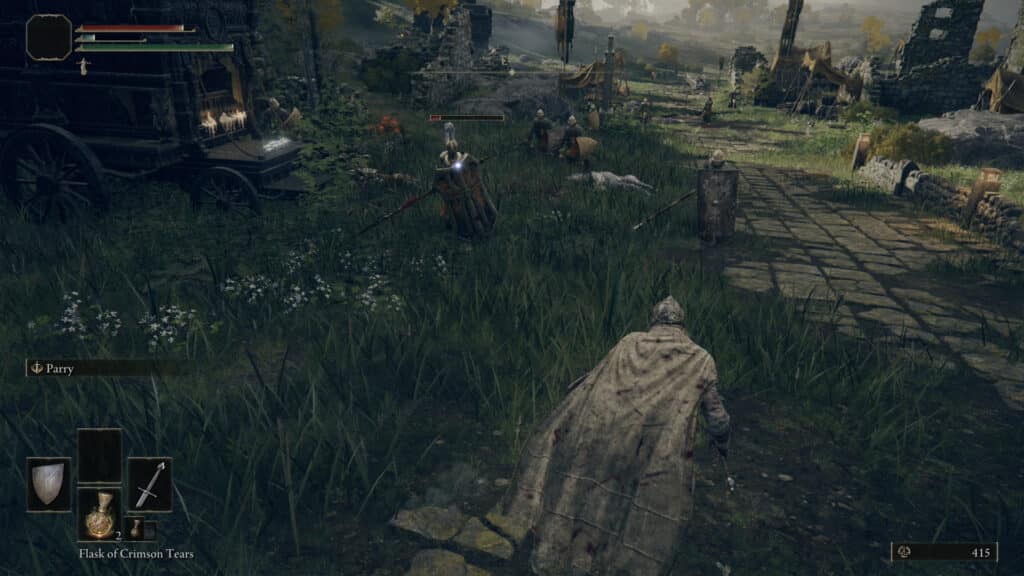
Not everything is entirely perfect with Elden Ring, though. FromSoftware has never been the greatest on the technical level with their games, and this one is no different. Longstanding camera issues persist; some things may never change, though the most prominent issues at launch come with frame stability and pop-in. Elden Ring struggles to maintain a locked 60 fps a lot of the time, even on next-gen hardware, which is a real disappointment. And pop-in is pretty bad, not just at long range but also close up. Prepare to see grass load in on top of green ground textures frequently. Hopefully, a few patches down the road will fix these technical shortcomings as they are pretty noticeable and occasionally distracting.
Elden Ring feels like a culmination of everything that FromSoftware has created in the past 13 years. Refining, reworking, and incorporating the best parts of their whole catalog into one complete package. The Lands Between is one of the most extraordinary open worlds I have ever had the pleasure of experiencing. It’s a world that you can’t help but lose yourself in for hours at a time thanks to its classic RPG sense of exploration and curiosity. This is the cherry on top for a team that has been firing on all cylinders for over a decade. Elden Ring is a triumph.




